Your cart is currently empty!
Search results for: “70”
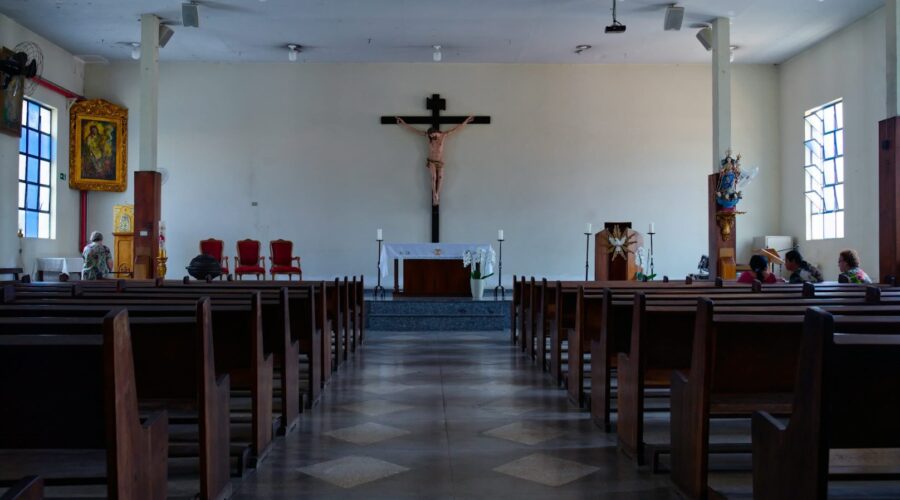
Discover the Church of Prismatic Light: A Journey of Spiritual Transformation
A Brief History
The Church of Prismatic Light is a spiritual community founded in the 1970s by a group of seekers inspired by the teachings of various spiritual traditions. Over the years, the church has evolved into a vibrant and inclusive community dedicated to personal and collective transformation.
Core Beliefs
Prismatic Light as Divine Source
Central to the Church’s beliefs is the concept of Divine Source as a radiant, multi-dimensional light that permeates all existence. This light is seen as the ultimate source of inspiration, wisdom, and guidance.
Oneness and Interconnectedness
The church emphasizes the interconnectedness of all beings and the importance of cultivating a sense of unity. Members believe that separation is an illusion and that our actions have profound effects on others and the collective.
Personal Growth and Spiritual Evolution
The church encourages its members to embark on a lifelong journey of personal growth and spiritual evolution. This process involves developing self-awareness, releasing limiting beliefs, and aligning with the Divine Source.
Practices and Rituals
Prayer and Meditation
Prayer and meditation are fundamental practices in the Church. Members gather regularly for group meditations and engage in personal prayer practices to connect with the Divine Source and cultivate inner peace.
Sacred Ceremonies
The church holds sacred ceremonies to celebrate special occasions and mark significant transitions. These ceremonies often involve music, chanting, and rituals designed to invoke the presence of the Divine Source.
Community Service
The church promotes community service as a way to express compassion and contribute to the greater good. Members volunteer their time and resources to support various charitable organizations and initiatives.
Teachings and Workshops
Weekly Services and Study Groups
The church offers weekly services that include readings, teachings, and discussions on various spiritual topics. Study groups delve deeper into specific teachings and provide opportunities for members to explore their spiritual paths.
Workshops and Retreats
The church organizes workshops and retreats that provide intensive learning experiences on topics such as energy healing, spiritual awakening, and conscious relationships.
Becoming a Member
Membership in the Church of Prismatic Light is open to anyone who resonates with its teachings and values. The process involves attending introductory events, engaging in personal reflection, and demonstrating a commitment to spiritual growth.
Benefits of Membership
- Community and Support: Access to a supportive and like-minded community that provides a sense of belonging and spiritual connection.
- Personal Transformation: Opportunities for deep personal growth and transformation through teachings, practices, and support.
- Spiritual Guidance: Access to experienced teachers and guides who can offer insights and guidance on spiritual challenges and questions.
- Contribution to the Collective: Participation in community service and initiatives that create a positive impact on society.
Conclusion
The Church of Prismatic Light offers a transformative spiritual path that emphasizes personal growth, unity, and connection with the Divine Source. Through its practices, teachings, and community, the church empowers individuals to unlock their inner potential and contribute to the creation of a more harmonious and enlightened world.
For more information and to connect with the Church of Prismatic Light, visit their website at www.prismaticlight.org.
Frequently Asked Questions
Q: What is the mission of the Church of Prismatic Light?
A: The mission of the church is to inspire and support individuals on their spiritual journeys, fostering personal transformation, unity, and connection with the Divine Source.
Q: Are there any prerequisites for becoming a member?
A: There are no formal prerequisites for membership. The church welcomes anyone who resonates with its teachings and values and is committed to spiritual growth.
Q: What is the typical membership fee?
A: The church operates on a donation-based model, and membership fees vary depending on each individual’s circumstances and level of financial support.
Q: Does the church have any political or religious affiliations?
A: The Church of Prismatic Light is not affiliated with any political party or religious organization. It respects all spiritual and faith traditions and encourages members to maintain their own personal beliefs.
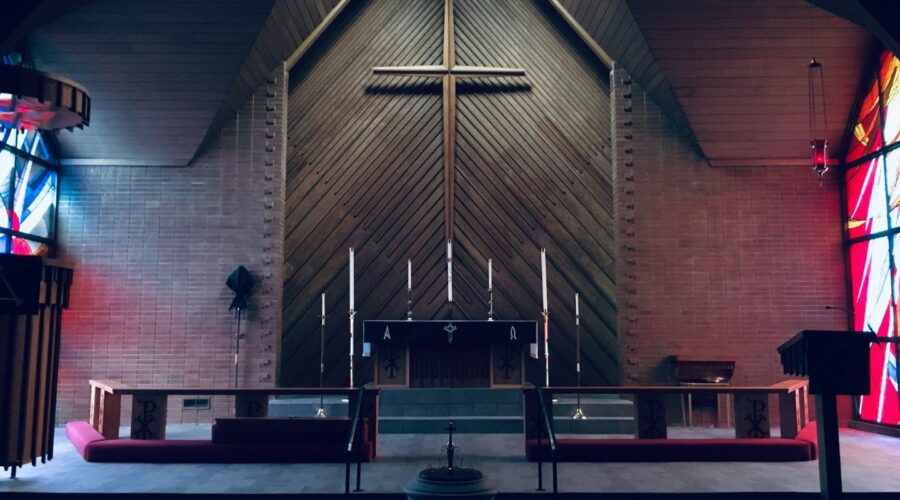
Chad Veach: Empowering a Generation Through Faith and Inspiration
Introduction
Chad Veach is an influential pastor, author, and speaker who has played a significant role in empowering a generation through faith and inspiration. Known for his passion for connecting people to God and helping them discover their purpose, Veach has built a robust global ministry that continues to impact lives worldwide.
Early Life and Background
Vocation and Preparation
Born in 1974 in Newport Beach, California, Veach felt a call to ministry from a young age. He attended Saddleback Church, where he was mentored by pastor Rick Warren and developed a deep foundation in biblical principles.
Founding Zoe Church
Planting Seeds of Faith
In 2000, Veach founded Zoe Church in Los Angeles, California, with a vision to create a church that was relevant, accessible, and transformative. Zoe Church rapidly grew, becoming one of the largest and most influential churches in the United States.
Speaking and Writing Ministry
Inspiring Hearts and Minds
Beyond his role as pastor, Veach is also a sought-after speaker and author. His messages are characterized by their authenticity, transparency, and practical wisdom. He has authored several books, including “Hope Rising” and “Unfiltered: Real Talk About Real Faith,” which have resonated with millions of readers globally.
Empowering Through Technology
Recognizing the power of technology, Veach leveraged digital platforms to extend his reach and impact. His podcast, “The Chad Veach Podcast,” features inspiring conversations with thought leaders and influencers, while his YouTube channel has garnered millions of subscribers and views.
Key Beliefs and Teachings
Grace and Empowerment
Central to Veach’s teachings is a message of grace and empowerment. He believes that God’s grace is sufficient for all our shortcomings, and that we are called to live empowered lives in Christ.
Purpose and Destiny
Veach emphasizes the importance of discovering our unique purpose and destiny. He encourages believers to seek God’s guidance and discern their path in life, knowing that they are created with a specific calling.
Community and Connection
Veach places a high value on community and connection. He believes that true growth and discipleship happen in the context of healthy relationships and authentic community.
Social Justice and Outreach
Compassion in Action
Beyond his spiritual leadership, Veach is actively involved in social justice initiatives and outreach programs. He has partnered with organizations addressing poverty, homelessness, and human trafficking, demonstrating the practical application of his faith.
Legacy and Impact
Chad Veach has made an undeniable impact on the Christian community and beyond. His ministry has reached millions of people, inspiring them to live lives of purpose, faith, and impact. His teachings continue to resonate with audiences worldwide, empowering them to find meaning and fulfillment in their walk with God.
Additional Resources
Conclusion
Chad Veach’s journey is a testament to the transformative power of faith and the importance of empowering others. Through his preaching, writing, and outreach efforts, he continues to inspire generations to embrace their purpose and live lives of meaning and significance.
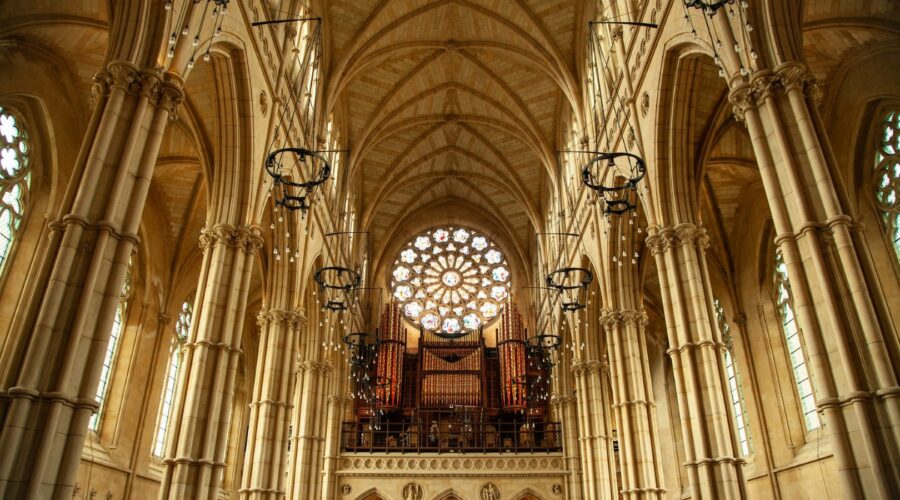
Unveiling the Grandeur of the Cathedral of the Blessed Sacrament
The Cathedral of the Blessed Sacrament is a majestic edifice that stands as a testament to the enduring power of faith and architectural brilliance. Situated in downtown Sacramento, California, it is the heart of the Catholic Diocese of Sacramento and a beacon of spirituality for the faithful.
Historical Significance
The origins of the Cathedral can be traced back to the early days of the city of Sacramento. In 1851, a small wooden church was built on the site of the present cathedral. As the city grew and the Catholic population expanded, the need for a larger and more permanent structure became apparent.
The construction of the current Cathedral began in 1887 and was completed in 1890. The design was inspired by the Gothic Revival style and incorporates intricate stone carvings, stained glass windows, and soaring spires.
Architectural Marvel
The Cathedral of the Blessed Sacrament is a masterpiece of Victorian Gothic architecture. Its imposing facade features two massive towers that dominate the skyline of downtown Sacramento.
Exterior
- Twin Towers: The two towers are 220 feet tall and are topped with spires that reach a height of 270 feet.
- Stone Carvings: The exterior is adorned with intricate stone carvings depicting biblical scenes and figures.
- Stained Glass Windows: The Cathedral boasts over 100 stained glass windows that depict scenes from the life of Christ and the saints.
Interior
- Nave: The vast nave is the main body of the Cathedral and can accommodate over 1,200 worshippers.
- Altar: The High Altar is a stunning work of art, made of marble and gold, and is the focal point of the Cathedral.
- Transepts: The transepts extend from the nave and form the arms of the cross-shaped plan of the Cathedral.
- Choir Loft: The choir loft is located above the High Altar and houses the Cathedral’s choir and organ.
Religious Significance
As the Cathedral of the Diocese of Sacramento, the Cathedral of the Blessed Sacrament is the seat of Bishop Jaime Soto. It is a center of worship for the Catholic community and hosts numerous liturgies, sacraments, and special events throughout the year.
The Cathedral is also home to the Blessed Sacrament, which is the consecrated bread that Catholics believe to be the body and blood of Jesus Christ. The Blessed Sacrament is kept in a tabernacle on the High Altar and is adored by worshippers.
Tours and Events
The Cathedral of the Blessed Sacrament is open to the public for tours and visits. Guided tours are available by appointment.
The Cathedral also hosts a variety of events throughout the year, including concerts, lectures, and art exhibitions. For more information, please visit the Cathedral’s website: https://www.cathedralsacramento.org
Conclusion
The Cathedral of the Blessed Sacrament is a landmark in downtown Sacramento and a symbol of the city’s rich history and cultural heritage. Its stunning architecture, religious significance, and vibrant community make it a must-see destination for visitors and worshippers alike.
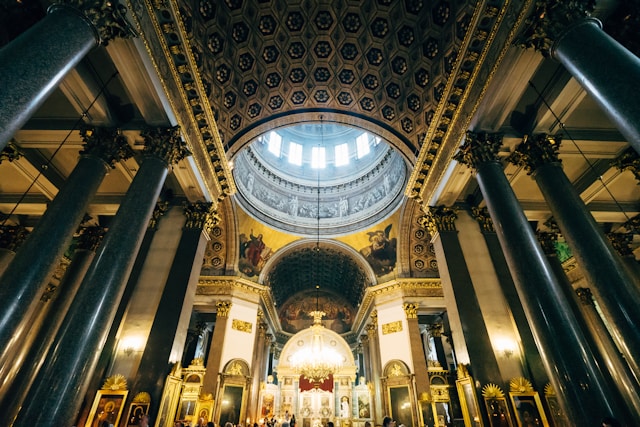
Discover the Holy Significance of Mount Olivet: A Comprehensive Guide
Introduction
Mount Olivet, known as Har HaZeitim in Hebrew, holds a profound spiritual and biblical significance. Located east of Jerusalem, this revered mount offers stunning panoramic views and a rich tapestry of history, religion, and culture.
Religious Importance
Jewish Tradition
- Mount Olivet is believed to be the burial place of the prophet Zechariah.
- According to Jewish tradition, the Mount of Olives will be the site of the resurrection of the dead.
Christian Tradition
- The Garden of Gethsemane, where Jesus prayed before his crucifixion, is located at the foot of Mount Olivet.
- The Church of All Nations, built in 1924, commemorates Jesus’ agony.
- The Dominus Flevit chapel stands on the site where Jesus wept over Jerusalem.
Islamic Tradition
- The Dome of the Ascension, located on the summit of Mount Olivet, marks the spot where Prophet Muhammad ascended to heaven.
- The “Ascent Trail” winds its way up the mountain, a popular pilgrimage route.
Historical Significance
Ancient Times
- Mount Olivet was a royal burial ground for the kings of Judah, including Uzziah and Manasseh.
- The Roman general Titus encamped his legions on the mount during the siege of Jerusalem in 70 CE.
Middle Ages
- During the Byzantine period, the Mount of Olives became a Christian pilgrimage site.
- In the 16th century, the Ottoman Turks built a fortress on the summit.
Modern Era
- The Mount of Olives was captured by Israel in the 1967 Six-Day War.
- Today, it is a peaceful sanctuary, home to churches, monasteries, and olive groves.
Panoramic Views
Mount Olivet offers breathtaking panoramic views of Jerusalem and its surroundings. From the summit, you can gaze upon:
- The Old City of Jerusalem, with its ancient walls and the Dome of the Rock.
- The Temple Mount, the holiest site in Judaism.
- The expansive Judean Desert, stretching out to the east.
Hiking Trails
Several hiking trails wind through the slopes of Mount Olivet, offering a serene and spiritual experience:
- Ascent Trail: This 1-mile trail leads from the Garden of Gethsemane to the summit, following the path Jesus is believed to have taken.
- St. George’s Trail: A 1.5-mile trail that passes by the Tomb of Zechariah and the Dominus Flevit chapel.
- Olive Grove Trail: A peaceful trail that meanders through centuries-old olive groves.
Monasteries and Churches
Mount Olivet is home to several monasteries and churches, each with its unique history and architecture:
- Church of All Nations: A stunning basilica built in the early 20th century, featuring mosaics depicting Jesus’ agony.
- Russian Orthodox Church of the Ascension: A majestic onion-domed church built in the 19th century, offering panoramic views.
- Tomb of Lazarus: A small cave believed to be the burial place of Lazarus, raised from the dead by Jesus.
- St. George Monastery: A Greek Orthodox monastery founded in the 5th century, with a beautiful courtyard and ancient frescoes.
- Wear comfortable shoes as some trails are steep.
- Bring water and snacks, as there are limited facilities on the mount.
- Respect the religious significance of the site and dress modestly.
- Allow ample time to explore the churches, monasteries, and views.
Tips for Visiting Mount Olivet
Conclusion
Mount Olivet, a sacred mountain with a rich historical and religious tapestry, offers a profound exploration of faith, history, and beauty. Whether you are a pilgrim, a hiker, or simply seeking a peaceful retreat, the Mount of Olives will leave an unforgettable mark on your spirit.
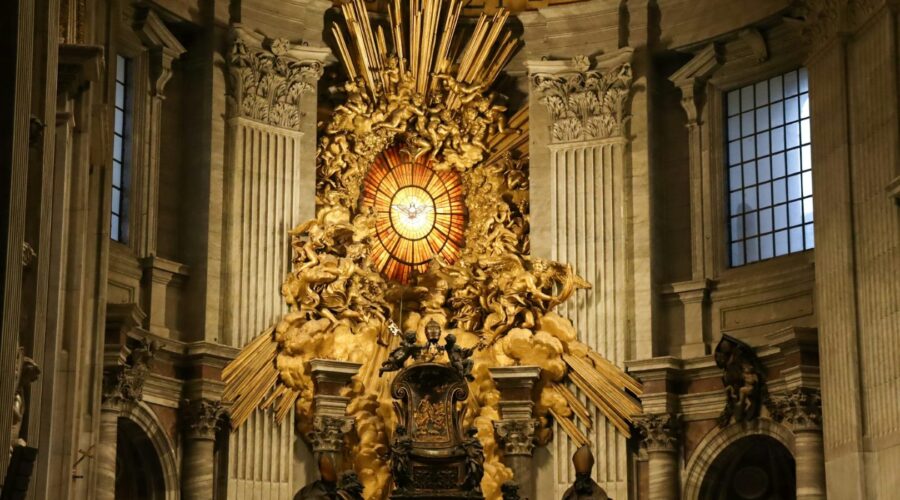
Explore the Rich History and Traditions of the Orthodox Church in America
Introduction
The Orthodox Church in America (OCA) is a self-governing Eastern Orthodox Church that serves over half a million faithful in the United States, Canada, and Mexico. Rooted in the ancient traditions of Christianity, the OCA offers a vibrant and spiritual community for Orthodox Christians seeking a deeper connection to their faith.
History
Origins and Establishment
The origins of the OCA can be traced back to the late 18th century, when Orthodox Christians from Russia and Alaska settled in North America. In 1794, the Russian Orthodox Church established a mission in Kodiak, Alaska, which became the first Orthodox parish in the Americas.
In 1870, the OCA was formally established as the Russian Orthodox Greek Catholic Church in North America. Over the following decades, the OCA expanded rapidly, establishing parishes and dioceses across the United States and Canada.
Autonomy and Self-Governance
In 1970, the OCA gained autocephaly (self-governance) from the Russian Orthodox Church. This granted the OCA the right to elect its own bishops and metropolitans, administer its own affairs, and develop its own liturgical and pastoral practices.
Beliefs and Practices
The Nicene Creed
The OCA adheres to the Nicene Creed, which outlines the fundamental beliefs of Christianity. This creed affirms the belief in one God, the Holy Trinity (Father, Son, and Holy Spirit), and the divine nature of Jesus Christ.
The Seven Sacraments
The OCA recognizes seven sacraments: Baptism, Chrismation, Eucharist, Confession, Marriage, Holy Unction, and Ordination. These sacraments are seen as channels of God’s grace that sanctify and strengthen believers.
Liturgy and Worship
The OCA’s liturgy is based on the Byzantine Rite, which has been celebrated in the Eastern Orthodox Church for centuries. The liturgy is characterized by its rich symbolism, beautiful music, and emphasis on community participation.
Structure and Administration
Primate and Holy Synod
The OCA is led by its primate, the Metropolitan of All America and Canada. The primate is elected by the Holy Synod, a council of bishops that governs the OCA. The Holy Synod is responsible for making major decisions and setting policies for the Church.
Dioceses and Parishes
The OCA is divided into dioceses, each led by a bishop. The dioceses are further divided into parishes, which are local communities of Orthodox Christians. Each parish is led by a priest, who is assisted by a deacon and lay leaders.
Education and Outreach
Seminaries and Institutes
The OCA operates several seminaries and institutes for the training of clergy and lay leaders. The most prominent of these institutions is St. Vladimir’s Orthodox Theological Seminary in Yonkers, New York.
Missionary Work
The OCA actively engages in missionary work, both in North America and beyond. The OCA’s missionary efforts are focused on reaching out to unchurched individuals and establishing new parishes and missions.
Conclusion
The Orthodox Church in America is a vibrant and growing community of Orthodox Christians in North America. With its rich history, profound beliefs, and dynamic worship, the OCA offers a unique and transformative spiritual experience for its members. As the OCA continues to thrive and expand, it remains a beacon of faith and a vital force in the Christian landscape of the Americas.
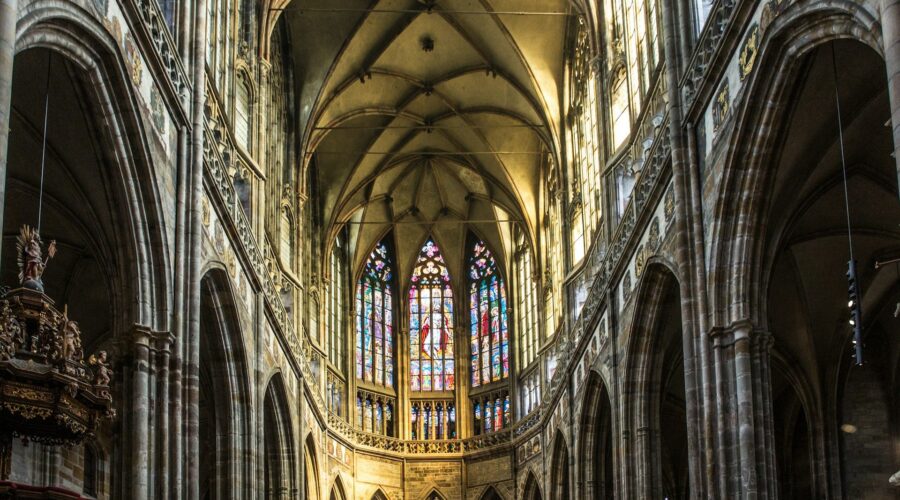
Unveiling the Rich History and Inspiring Mission of Saint Francis Xavier Catholic Church
Introduction
Saint Francis Xavier Catholic Church, nestled amidst the vibrant tapestry of communities in Malabar, Florida, has embarked on a remarkable journey of over six decades, leaving an enduring legacy of faith, service, and spiritual enrichment.
The Genesis: Humble Beginnings
Birth of a Parish
On March 29, 1959, Archbishop Patrick Hurley of the then-Diocese of St. Augustine, recognized the growing need for a Catholic community in the Malabar area. He appointed Father Patrick Cooper as the founding pastor of Saint Francis Xavier Catholic Church.
The fledgling parish initially met in a local school before purchasing a small chapel on Babcock Street in 1962. This modest structure became the cornerstone of a thriving Catholic community, eagerly anticipating the construction of a permanent church.
A Home for the Faithful
In 1968, under the leadership of Father Daniel J. O’Brien, the parish embarked on an ambitious project to build a new church. Architect William Sloan designed the breathtaking edifice, blending traditional and modern elements.
The cornerstone was laid on January 12, 1969, and on December 14, 1969, Archbishop Hurley solemnly dedicated the new Saint Francis Xavier Catholic Church. The church’s striking features include a soaring bell tower, stained glass windows depicting scenes from the life of Saint Francis Xavier, and a spacious sanctuary adorned with intricate artwork.
A Thriving Community
Over the decades, Saint Francis Xavier Catholic Church has flourished into a vibrant and diverse community, welcoming parishioners from all walks of life. The parish offers a wide range of ministries and programs, including:
- Education: Religious education classes for all ages, adult faith formation programs, and Bible study groups
- Worship: Daily Masses, weekend Masses in English and Spanish, and special liturgical celebrations throughout the year
- Service: Outreach programs to the needy, such as a food pantry, clothing drives, and support for local charities
- Fellowship: Social events, community gatherings, and youth groups that foster a strong sense of belonging
Service and Outreach
Inspired by the teachings of Saint Francis Xavier, the patron saint of missions, the parish places a strong emphasis on service and outreach. The Saint Francis Xavier Society of Saint Vincent de Paul provides assistance to the homeless, the elderly, and families in need.
The parish also supports various missionary efforts, both locally and internationally. It partners with organizations such as Catholic Relief Services, Feed the Hungry, and Habitat for Humanity to address poverty, hunger, and homelessness around the world.
Educational Legacy
Saint Francis Xavier Catholic Church recognizes the importance of lifelong learning. The parish established Saint Francis Xavier Catholic School in 1962, which has since become a pillar of Catholic education in the community.
The school provides a rigorous academic curriculum rooted in Catholic values. It fosters intellectual growth, spiritual formation, and a commitment to serving others. Graduates of Saint Francis Xavier Catholic School have gone on to make significant contributions to their communities and the world.
A Place of Pilgrimage and Reverence
The relics of Saint Francis Xavier, brought to the church from Rome in 1970, have made Saint Francis Xavier Catholic Church a destination for pilgrims from near and far. The relics are enshrined in a special chapel, where the faithful can venerate the saint and seek his intercession.
The church also houses a life-sized statue of Saint Francis Xavier, a constant reminder of his missionary zeal and unwavering faith. Visitors are often moved by the beauty of the relics and the inspiring presence of the statue.
Leadership and Stewardship
Saint Francis Xavier Catholic Church has been blessed with a succession of dedicated pastors who have guided the parish with wisdom and compassion. The current pastor, Father Bryan Jenkins, continues the legacy of service and stewardship, leading the parish into a bright future.
The parish relies on the generous support of its parishioners to sustain its ministries and outreach programs. Through stewardship campaigns and fundraising efforts, the community ensures that Saint Francis Xavier Catholic Church remains a beacon of faith and a source of hope for generations to come.
Conclusion
Saint Francis Xavier Catholic Church stands as a testament to the enduring power of faith, community, and service. From its humble beginnings to its present-day vibrancy, the parish has played a vital role in shaping the spiritual and cultural landscape of Malabar. As the community continues to grow and evolve, Saint Francis Xavier Catholic Church remains a steadfast presence, offering a sanctuary of worship, a source of education, and a catalyst for service to all who seek its embrace.
Call to Action
We invite you to visit Saint Francis Xavier Catholic Church, experience our vibrant community, and discover the transformative power of faith. Join us for Mass, participate in our ministries, or simply find solace and inspiration within our sacred walls. Together, we will continue the legacy of Saint Francis Xavier, spreading the Gospel message of love, compassion, and service to all.
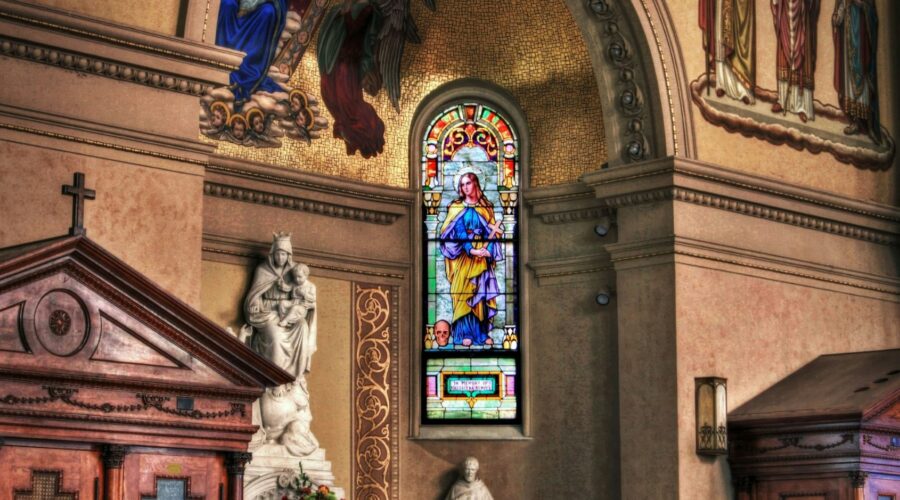
John Osteen: A Life of Faith, Leadership, and Legacy
Introduction
John Osteen, the revered pastor and author, captivated hearts and inspired countless lives throughout his remarkable ministry. From his humble beginnings to his global impact, his journey is a testament to the transformative power of faith, leadership, and service.
Early Life and Call to Ministry
John Osteen was born on April 21, 1921, in Humble, Texas. Raised in a devout Christian home, he experienced a profound calling to ministry at a young age. After graduating from Baylor University, he was ordained as a Baptist minister in 1946.
- Early influences:
- Sunday school teacher
- Parents’ devout faith
- Baptist upbringing
- Ordination in 1946
- Pastoral beginnings at First Baptist Church in Port Arthur
Founding of Lakewood Church
In 1959, John Osteen established Lakewood Church in a rented storefront in Houston, Texas. With unwavering faith and a relentless pursuit of God’s purpose, he built Lakewood into one of the largest and most influential churches in the world.
- Vision for a vibrant and welcoming church
- Initial location in a small storefront
- Growth through evangelism and community outreach
- Relocation to a former roller-skating rink
- Construction of the Lakewood Church campus
Leadership and Ministry Style
John Osteen was renowned for his exceptional leadership abilities and his passion for spreading the gospel message. His ministry was characterized by:
- Heartfelt and relatable sermons
- Emphasis on faith, hope, and positive thinking
- Anointed preaching that touched millions
- Building a global televangelist ministry
- Nurturing a loving and supportive church community
Family and Personal Life
John Osteen married Dodie Ivie in 1944, and together they raised four children: Lisa, Paul, Tamara, and April. His family played a vital role in his ministry and legacy.
- Marriage to Dodie Ivie
- Support from his wife and children
- Family values and strong bond
- Private life focused on faith and family
Legacy and Impact
John Osteen’s legacy extends far beyond his lifetime. His teachings continue to inspire and transform lives through books, sermons, and the ongoing ministry of Lakewood Church.
- Thousands of churches planted worldwide
- Reach of his message through television and media
- Establishment of humanitarian organizations
- Model for effective church leadership
- Inspiration to countless Christians and non-Christians alike
Table: Key Milestones in John Osteen’s Life
| Year | Milestone |
|—|—|
| 1921 | Born in Humble, Texas |
| 1946 | Ordained as a Baptist minister |
| 1959 | Founded Lakewood Church |
| 1982 | Relocated Lakewood Church to a former roller-skating rink |
| 1986 | Completed construction of the Lakewood Church campus |
| 1999 | Preached to over 70 million people worldwide |
| 2019 | Passed away at the age of 97 |Conclusion
John Osteen was a visionary leader, a gifted teacher, and a beacon of hope for millions around the world. His life and ministry serve as a powerful reminder of the transformative power of faith, the importance of strong leadership, and the enduring legacy that can be built through a life dedicated to serving others.
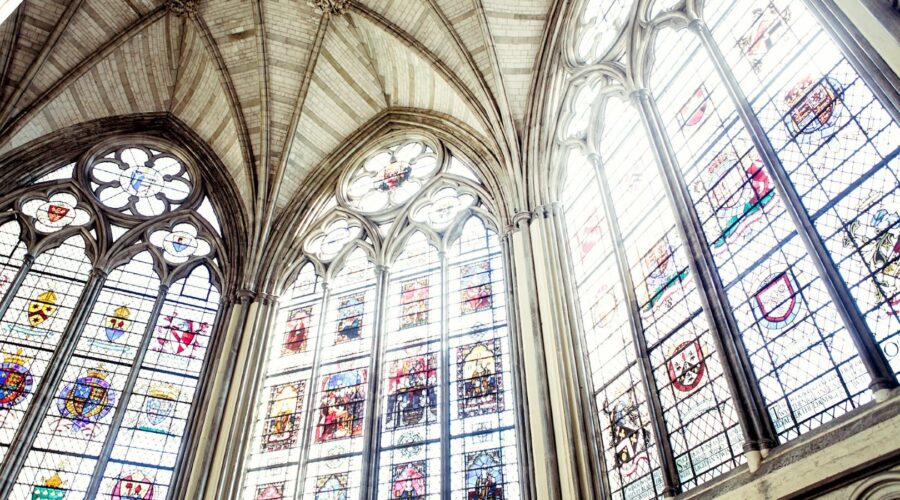
Discover the Evangelical Presbyterian Church: A Guide to Beliefs, History, and Missions
Introduction
The Evangelical Presbyterian Church (EPC) is a vibrant and growing denomination with a rich heritage and a strong commitment to biblical truth. This comprehensive guide will delve into the distinctive beliefs, fascinating history, and active missions of the EPC, providing you with valuable insights into this dynamic Christian community.
II. Beliefs
A. Core Tenets
- The Sovereignty of God: We believe that God is supreme over all creation and that His will prevails over all circumstances.
- The Trinity: We affirm the existence of the triune God: Father, Son, and Holy Spirit, each distinct but unified in essence.
- The Authority of Scripture: We hold that the Bible is the inspired and infallible Word of God, the ultimate authority for faith and practice.
- The Sinfulness of Humanity: We believe that all have sinned and fallen short of God’s glory, deserving His judgment.
- The Grace of God: We proclaim that salvation is a free gift of God’s grace, given to us through faith in Jesus Christ.
B. Doctrinal Distinctives
- Presbyterian Polity: The EPC employs a representative form of government, where authority is vested in elders and deacons elected by the congregation.
- Evangelical Emphasis: We prioritize evangelism and missions, believing that the gospel must be shared with the world.
- Ecumenical Involvement: The EPC actively participates in interdenominational relationships, seeking unity and cooperation among Christians.
III. History
A. Origins and Early Development
The EPC traces its roots back to the 19th century, emerging from the division in the Presbyterian Church in the United States (PCUS) over issues of slavery and modernization. In 1861, the EPC was founded as a separate denomination with a strong commitment to evangelical principles.
B. Key Events and Leaders
- The Civil War: The EPC supported the Union during the Civil War and actively ministered to soldiers and their families.
- J. Laurence Schaff: Dr. Schaff, an influential theologian and author, served as a prominent leader in the EPC.
IV. Missions
A. Global Outreach
The EPC is actively involved in missions worldwide, with a focus on evangelism, church planting, and humanitarian aid. Key mission fields include Africa, Asia, Latin America, and the Middle East.
- World Mission: The EPC supports over 500 missionaries serving in more than 60 countries.
- Partnerships and Collaborations: The EPC partners with other organizations, churches, and ministries to maximize impact.
B. Domestic Ministries
The EPC also engages in extensive ministries within North America, addressing issues such as poverty, homelessness, and social justice.
- Community Outreach: EPC churches partner with local organizations to provide food, shelter, and support to those in need.
- Leadership Development: The EPC invests in training and equipping future leaders for ministry and service.
V. Current Status and Challenges
Today, the EPC is a vibrant and growing denomination with over 700 congregations and 130,000 members. However, the church faces challenges such as:
- Changing Culture: The EPC navigates the shifting societal norms and cultural values that can impact faith and practice.
- Ministry Expansion: The EPC seeks to expand its missions and ministries while maintaining financial sustainability.
VI. Conclusion
The Evangelical Presbyterian Church stands as a testament to the power of biblical truth, evangelical fervor, and a deep commitment to mission. With its rich history and vibrant present, the EPC continues to be a beacon of hope, serving its members and impacting the world for Christ. Whether you are drawn to its core beliefs, fascinated by its history, or inspired by its missions, the EPC offers a welcoming community where faith and purpose can be discovered and lived out.
Resources
For further exploration, consider the following resources:

Saint Margaret of Scotland: The Queen Who Changed a Nation
Introduction
Saint Margaret of Scotland, also known as Margaret of Wessex, was a medieval queen consort of Scotland. She is a significant figure in Scottish history, known for her piety, charity, and enduring legacy. This detailed blog post will explore the life and contributions of Saint Margaret, shedding light on her role as a royal figure, a religious icon, and a symbol of Scottish national identity.
Early Life and Family
Margaret was born in approximately 1045 in Wessex, England, into the royal family of the House of Wessex. Her father was Edward the Exile, the son of King Edmund Ironside. Her mother, Agatha, was the daughter of Emperor Henry III of the Holy Roman Empire.
Exile and Return
Margaret’s family faced political challenges, and she was forced into exile with them at a young age. They sought refuge at the court of her uncle, King Stephen I of Hungary. After the death of her father, Margaret and her mother returned to England, where she spent her adolescence in the convent of Wilton Abbey.
Marriage to Malcolm III
In 1070, Margaret married Malcolm III, the King of Scotland. Their marriage had a profound impact on Scottish society, ushering in a period of cultural and religious transformation.
Political Alliance
The marriage between Margaret and Malcolm strengthened the political ties between Scotland and England. It also helped to stabilize the Scottish monarchy during a period of turmoil.
Religious Influence
Margaret was a devout Christian, and she played a central role in reforming the Scottish Church. She introduced Benedictine monasticism, founded abbeys and churches, and encouraged the spread of Christianity throughout the kingdom.
Charity and Social Reforms
Margaret was known for her compassion and generosity towards the poor and the needy. She established hospitals, almshouses, and schools, providing support and education to those in need.
Social Justice
Margaret worked to improve the lives of Scottish women. She promoted women’s rights and reformed laws that discriminated against them.
Children and Legacy
Margaret and Malcolm had six children, including two who became kings of Scotland: Edgar and Alexander I. Her children continued her legacy of piety and reform, shaping the future of Scottish history.
Sainthood
After her death in 1093, Margaret was canonized by Pope Innocent IV in 1250. She is now considered a saint in both the Catholic and Anglican churches.
Historical Significance
Saint Margaret of Scotland had a lasting impact on Scottish history, religion, and society. Her contributions to the nation include:
- Religious reform and the spread of Christianity
- Social justice and the advancement of women’s rights
- Strengthening of the Scottish monarchy and political stability
- Establishment of a legacy of piety and charity
Cultural Heritage
Saint Margaret of Scotland remains an important figure in Scottish culture and heritage. Her name is associated with numerous churches, schools, and hospitals throughout the country.
Feast Day
Margaret’s feast day is celebrated on November 16th in the Catholic Church and on November 13th in the Anglican Church.
Shrine
Margaret’s tomb in Edinburgh Castle is a popular pilgrimage site, where devotees seek her intercession and blessings.
Conclusion
Saint Margaret of Scotland was an extraordinary woman who played a pivotal role in shaping the history and identity of the Scottish nation. Her legacy as a royal figure, religious icon, and symbol of social change continues to inspire and guide Scots to this day.
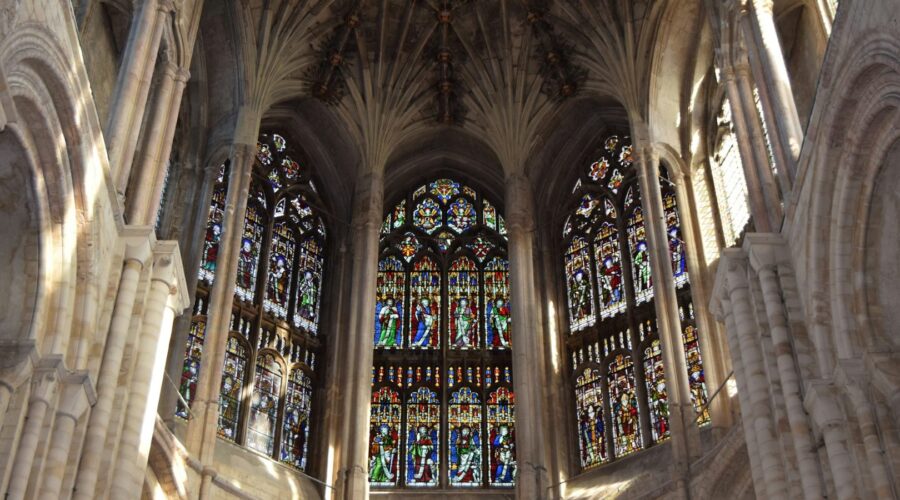
Unveiling the Sacred History: A Comprehensive Guide to Our Lady of Grace Church
1. Historical Tapestry
Nestled amidst the vibrant streets of Hoboken, New Jersey, Our Lady of Grace Church stands as a beacon of faith and a testament to the power of resilience. Its history, spanning over a century, is a captivating tale intertwined with the lives of countless individuals.
1.1. Origins and Founding
In the late 19th century, Hoboken experienced a surge of Italian immigrants. Seeking a place of worship that embraced their cultural heritage, they established Our Lady of Grace parish in 1888. The church’s first pastor, Father Angelo Vitiello, played a pivotal role in shaping its early identity.
1.2. Construction and Expansion
In 1904, the groundbreaking for the current church building took place. Designed by renowned architect Michael J. Garvin, the Romanesque Revival-style structure features intricate stained-glass windows, soaring arches, and a majestic pipe organ. Over the years, the church has undergone several renovations and expansions to accommodate its growing congregation.
2. Architectural Splendor
Our Lady of Grace Church is not only a place of worship but also an architectural masterpiece. Its captivating exterior showcases a harmonious blend of stone, brick, and terra-cotta.
2.1. Exterior
The church’s facade is adorned with intricate carvings and sculptures. The main entrance is flanked by two bell towers that reach skyward, symbolizing the church’s connection to the heavens.
2.2. Interior
Inside, the church’s grandeur is unveiled. The nave features majestic columns that support the vaulted ceiling. The sanctuary is a breathtaking sight, with its intricately painted dome and vibrant stained-glass windows depicting biblical scenes.
3. Community Cornerstone
Our Lady of Grace Church is deeply rooted in the Hoboken community. It serves as a spiritual sanctuary, a hub for social events, and a provider of social services.
3.1. Pastoral Ministries
The church offers a wide range of pastoral ministries, including regular Masses, confession, and spiritual guidance. It also provides support for youth, families, and the elderly.
3.2. Community Programs
Our Lady of Grace Church hosts a variety of community programs, such as a food pantry, a homeless shelter, and a soup kitchen. It also offers educational programs and English classes for immigrants.
3.3. Social Events
The church is a central location for social events, including festivals, dinners, and dances. These gatherings foster a sense of belonging and unity among parishioners.
4. Legacy and Impact
Our Lady of Grace Church has played a significant role in shaping the cultural and spiritual landscape of Hoboken. Its history is a testament to the enduring power of faith and the transformative impact it has had on generations of worshippers.
4.1. Historical Preservation
The church has been designated as a historic landmark by the Hoboken Historical Preservation Commission. This recognition ensures its preservation for future generations.
4.2. Ongoing Vitality
Our Lady of Grace Church continues to thrive as a vibrant and active parish. It remains a beacon of faith, hope, and community for residents of Hoboken and beyond.
5. Practical Information
For those interested in visiting or attending services at Our Lady of Grace Church, here are some practical details:
- Address: 400 Willow Avenue, Hoboken, NJ 07030
- Phone: (201) 659-0545
- Website: https://www.olghoboken.org/
5.1. Mass Times
Mass times vary throughout the week. Please visit the church’s website for the most up-to-date schedule.
5.2. Tours
Guided tours of the church are available by appointment. Please contact the parish office to schedule a tour.
6. Conclusion
Our Lady of Grace Church is a cherished landmark and a vibrant spiritual community in the heart of Hoboken, New Jersey. Its history, architecture, and community outreach are testaments to its enduring significance. Whether you are a longtime parishioner or a first-time visitor, Our Lady of Grace welcomes you with open arms.
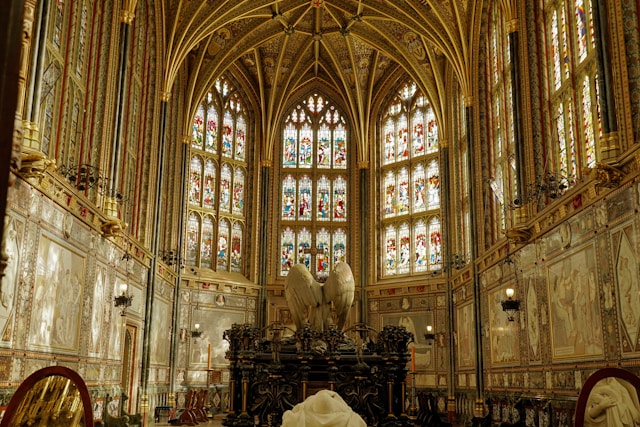
Hans Küng: A Pioneering Theologian and Ecumenical Leader
Hans Küng was a Swiss Catholic priest, theologian, and author who played a prominent role in the Catholic Church and the ecumenical movement. Throughout his career, he challenged traditional Church doctrines and advocated for reform, earning him both praise and controversy.
Early Life and Education
Born in 1928 in Sursee, Switzerland, Küng was ordained a priest in 1954. He pursued his studies at the University of Münster, Germany, earning a doctorate in theology in 1960.
Theological Controversies
Küng gained international attention in the 1960s and 1970s with his controversial writings that challenged traditional Church teachings on various topics.
- Infallibility of the Pope:
Küng argued that the pope is not infallible, and that his teachings can be mistaken.
- Celibacy of the Clergy:
He advocated for the ordination of married men as priests, arguing that celibacy is not a requirement of scripture.
- Contraception:
Küng believed that responsible use of contraception was morally acceptable, despite the Church’s prohibition.
- Female Ordination:
He supported the ordination of women as priests, arguing that it would reflect the Church’s fundamental commitment to equality.
Ecumenical Efforts
In addition to his theological writings, Küng was a tireless advocate for ecumenism, the movement towards Christian unity. He established the Hans Küng Global Ethic Forum in 1990, which promotes interfaith dialogue and a universal ethical framework.
Küng played a key role in the ecumenical movement, participating in the Second Vatican Council (1962-1965) and serving as a member of the Pontifical Council for Promoting Christian Unity.
Other Contributions
Beyond his theological and ecumenical work, Küng also made significant contributions to other fields.
- Nuclear Disarmament:
He actively campaigned for nuclear disarmament and was a strong critic of nuclear weapons.
- Human Rights:
Küng was a vocal advocate for human rights and social justice, working with various organizations to promote human dignity.
- Scholarly Research:
He authored numerous books and articles, making significant contributions to the fields of theology, philosophy, and ethics.
Recognition and Legacy
Küng’s work has been recognized worldwide, earning him numerous awards and accolades.
Despite facing criticism and opposition from some within the Catholic Church, Küng’s legacy as a pioneering theologian and ecumenical leader remains. His writings and efforts continue to inspire and challenge the Church and the broader Christian community today.
Awards Year Templeton Prize 1980 Erasmus Prize 1982 Peace Prize of the German Book Trade 1987 Sonning Prize 1996 - In 2009, the University of Notre Dame awarded Küng the Notre Dame Award for Distinguished Contribution to Church History.
- In 2013, he received the honorary degree of Doctor of Humane Letters from Harvard University.
Conclusion
Hans Küng was a visionary theologian and ecumenical leader who dedicated his life to challenging traditional doctrines, promoting interfaith dialogue, and advocating for peace and justice. His legacy continues to inspire and challenge the Christian community today, contributing to a more inclusive and progressive Church.

Discover the Rich History and Significance of Our Lady of Guadalupe Catholic Church
Our Lady of Guadalupe Catholic Church, nestled in the heart of [City Name], has served as a beacon of faith and a spiritual sanctuary for countless Catholics for over [Number] years. This iconic church holds immense historical and religious significance, attracting pilgrims and visitors from far and wide.
The Apparition of Our Lady
The church’s origins can be traced back to the miraculous apparition of Our Lady of Guadalupe to Juan Diego Cuauhtlatoatzin, an indigenous peasant, in 1531. According to tradition, Mary appeared to Juan Diego on Tepeyac Hill, near Mexico City, and asked him to build a church in her honor. When Juan Diego relayed the message to the bishop, he was asked for proof. The bishop requested that Juan Diego return with a sign from the Virgin. Upon returning to Tepeyac Hill, Juan Diego witnessed roses blooming out of season and collected them in his cloak.
When Juan Diego presented the cloak to the bishop, the image of Our Lady of Guadalupe was miraculously imprinted on the fabric. The image, depicting Mary as a pregnant woman with dark skin and indigenous features, became a symbol of hope and unity for the indigenous population of Mexico.
The Construction of the Church
Following the apparition, the construction of the first church on Tepeyac Hill began in 1533. The Old Basilica, completed in 1709, served as the principal shrine to Our Lady of Guadalupe until 1976. Due to its structural instability and the increasing number of pilgrims, the New Basilica was built adjacent to the Old Basilica and inaugurated in 1976.
The New Basilica
The New Basilica of Our Lady of Guadalupe is a magnificent architectural masterpiece, designed by Mexican architect Pedro Ramírez Vázquez. The vast interior can accommodate up to 10,000 worshipers and features stunning stained glass windows and intricate mosaics that depict the history of the apparition and the life of Mary.
- Capacity: 10,000 worshipers
- Height: 68 meters (223 feet)
- Diameter of the dome: 81 meters (266 feet)
- Stained glass windows: Over 100 windows, depicting scenes from the Bible and the history of Our Lady of Guadalupe
Pilgrimages and Devotion
Our Lady of Guadalupe Catholic Church is a major pilgrimage destination, attracting over 20 million visitors each year. Pilgrims come from all over Mexico and the world to pay homage to the Virgin and pray for her intercession. The feast day of Our Lady of Guadalupe, celebrated on December 12th, is one of the most important religious holidays in Mexico.
The church offers a variety of services for pilgrims, including Masses in several languages, guided tours, and confessions. There are also numerous shops and restaurants in the surrounding area where pilgrims can purchase religious items and souvenirs.
Museum and Archives
In addition to the basilica, there is also a museum and archives on the premises. The museum houses a collection of artifacts and documents related to the apparition and the history of the church. The archives contain over 100,000 documents, including the original account of Juan Diego’s encounter with the Virgin.
Conclusion
Our Lady of Guadalupe Catholic Church is a living testament to the enduring faith and devotion of the Catholic people. From its humble beginnings on Tepeyac Hill to its status as one of the world’s most important pilgrimage destinations, the church has played a vital role in the history and culture of Mexico and beyond. Whether you are a pilgrim seeking spiritual renewal or a visitor interested in history and architecture, Our Lady of Guadalupe Catholic Church is a must-visit destination that will leave a lasting impression.
Tips for Visitors
- If possible, plan your visit during the week to avoid large crowds.
- Wear comfortable shoes as you will be doing a lot of walking.
- Be respectful of the religious nature of the site.
- Take your time to explore the basilica, museum, and archives.
- Bring a camera to capture the stunning architecture and artwork.